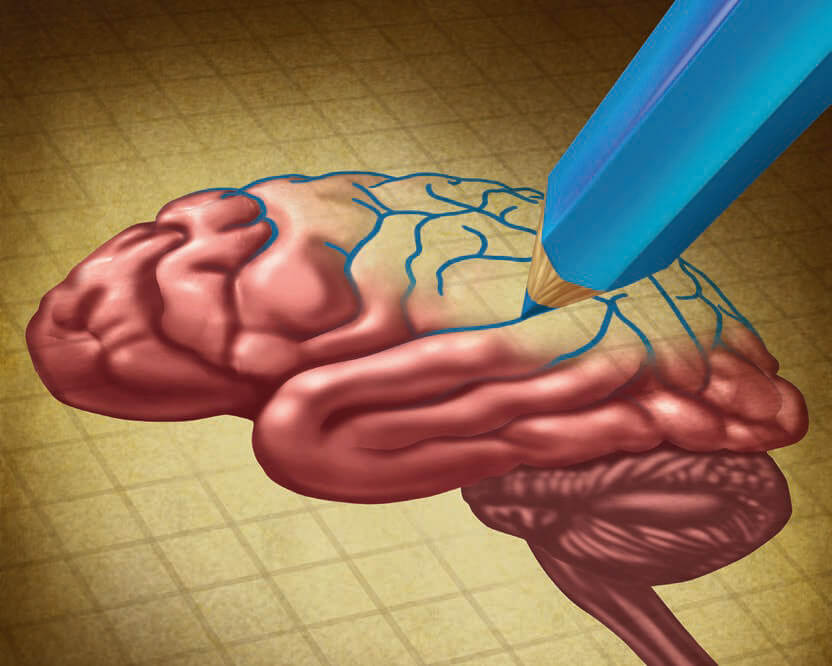Mind my mind
You know those people, so beloved of cult branders, who get commercial logos tattooed onto their skin? Devotees of Harley, Apple, Nike or Coke. What happens when the brand repositions, updates its visual identity, moves on with its slogan? Do the ‘brand police’ come round and insist on new typography, different colours and freshly mandated, ™-protected, words on visible body parts? “Sorry, your ankle’s not on guidelines.”
Marketers haven’t got that controlling yet, and, in any case, the human cells they really care about are the ones in people’s heads. They want memory, and talk about it in militaristic terms. The ambition is to ‘own’ concepts, words or colours, so that people’s association with them is locked to the brand.
That quest for mindshare is encoded in the classic definition of positioning itself: “occupying a distinct space in the minds of consumers”. For marketers who think of their brands as colossal edifices, with dollar valuations to match, it is always sobering to be reminded of the atomised reality of their existence only in people’s minds.
Marketers might be buoyed, then, by new academic research (see panel), which suggests that the human capacity for memory is vastly greater than hitherto assumed. Does that mean we should all redouble our efforts in an attempt to commandeer those unexplored valleys and folds of retention?
Not so fast. That extra capacity to remember does not equate to either the willingness or ability to forget. Right now, that might not feel like an issue, as you strive for a bit of recall; but, down the line, it could. Marketers bent on ‘sticky’ might one day regret being ‘stuck’.
Brands are tattoos in the mind. It takes time and, often, pain on behalf of the recipient to establish them there. Once lodged, though, with all their florid codes, cues and associations, they are stubbornly hard to erase. You want the brand to move on? Tough. The old one is indelibly inked. It’s the marketing equivalent of a bicep declaring eternal love to Susan when you’re standing at the altar with Abigail.
The list of brands that have tried to wrest control back from a trillion synapses is a long one. It includes BMW, which attempted to soften its image by replacing its global slogan with the single word ‘Joy’, and Tesco, which tried to move on from its ‘Every little helps’ tag.
 Both gave up and reintroduced the phrases that made them famous. But at least that was good stuff to start with. Stuck forever with ‘The ultimate driving machine’? Not such a terrible fate. Imagine being stuck with ‘ISA ISA baby’.
Both gave up and reintroduced the phrases that made them famous. But at least that was good stuff to start with. Stuck forever with ‘The ultimate driving machine’? Not such a terrible fate. Imagine being stuck with ‘ISA ISA baby’.
There is another reason to care more about what sticks, that can be summed up in a word we don’t use nearly enough: respect. Memory is where people live. It’s what makes them, them. The heartbreak of Alzheimer’s Disease is felt by people when they realise that even they are no longer part of their loved one’s memory bank. The person is alive but feels lost to them.
If memory is precious, we should think about what we put in there. It’s not like an ugly billboard, where people can look away if they want. People can’t turn off their minds. Once that maddening jingle is in, through dint of endless repetition, it’s in. Is that what you want from your day job – that when people see their lives flash before them, in their last moments, that trite tune and stupid lyric is an unwanted part of the repertoire?
We want consumers to remember; we want our share of the canvas of the mind. It’s our vocation, it’s what we do. In the end, though, there are different ways to do any job. It comes down to a form-versus-function debate, like the ones architects and designers have, before realising that, for the sake of humanity if nothing else, there is no ‘versus’: the former must be part of the latter.
It might work to ‘do a Gocompare’, might serve the immediate requirement of branding, but ugliness of form should automatically disqualify us from putting a tick in the ‘function’ box. If we can’t find ways to do it with more grace, beauty and friendliness, let’s not do it at all.
Respect. When the economy gets tough, when markets get crowded, when our livelihoods hang on the next prompted awareness score, it’s an easy enough word to forget.
At times like these, in jobs like ours, there’s an argument to have that word just visible every time we glance at our Apple Watches, tattooed onto our wrists.
 New research from The Salk Institute in California has arrived at the astonishing conclusion that the human capacity for memory isn’t just a little bigger than previously estimated, but bigger by an order of magnitude. Drawing on new discoveries about synapse size, it shows that 10 times more information can be stored, taking memory to one petabyte – about the same as the World Wide Web. The findings were first published in online scientific journal eLife (pictured here are three of the authors, Terry Sejnowski, Cailey Bromer and Tom Bartol); a full explanation can be found at bit.ly/10xMemory.
New research from The Salk Institute in California has arrived at the astonishing conclusion that the human capacity for memory isn’t just a little bigger than previously estimated, but bigger by an order of magnitude. Drawing on new discoveries about synapse size, it shows that 10 times more information can be stored, taking memory to one petabyte – about the same as the World Wide Web. The findings were first published in online scientific journal eLife (pictured here are three of the authors, Terry Sejnowski, Cailey Bromer and Tom Bartol); a full explanation can be found at bit.ly/10xMemory.
Daniel Kahneman, the renowned behavioural economist and ad-planner’s favourite, divides the human self into the “experiencing self” and “remembering self”. The former is there in the moment, while the latter evaluates the experience afterwards. But the remembering self doesn’t always do this accurately, and is disproportionately influenced by how an experience ends: those that end well tend to be remembered as better than they actually were, with the reverse for those that end badly. An important finding for service brands.
In his controversial book How Brands Grow, Professor Byron Sharp claims the “dominant way that advertising works is by refreshing and occasionally building memory structures”. Sharp, director of the Ehrenberg-Bass Institute for Marketing Science at the University of South Australia, is a critic of “the past world view” that focuses on persuasion rather than salience.
